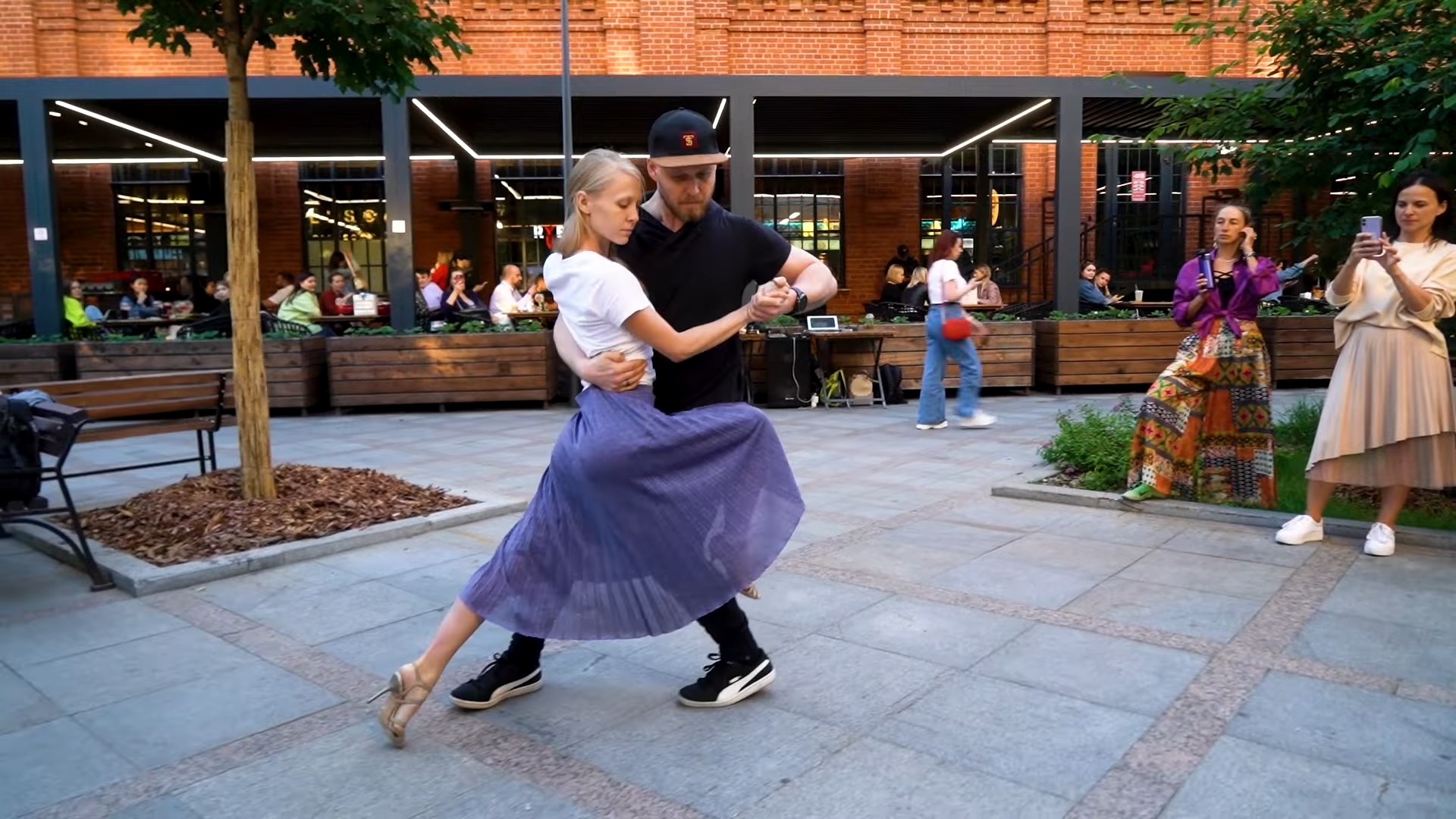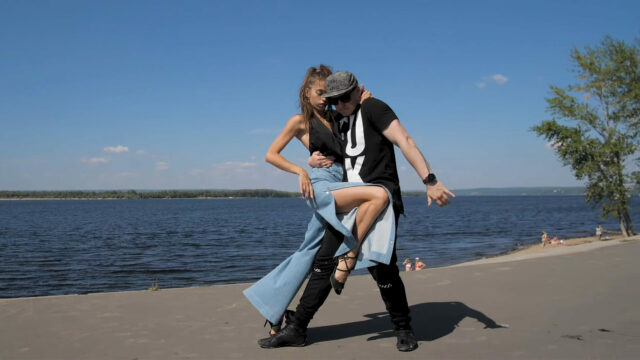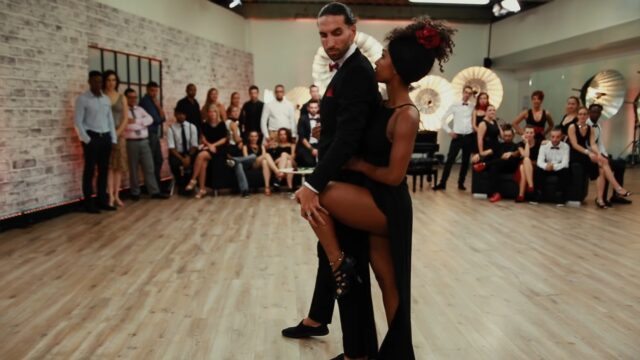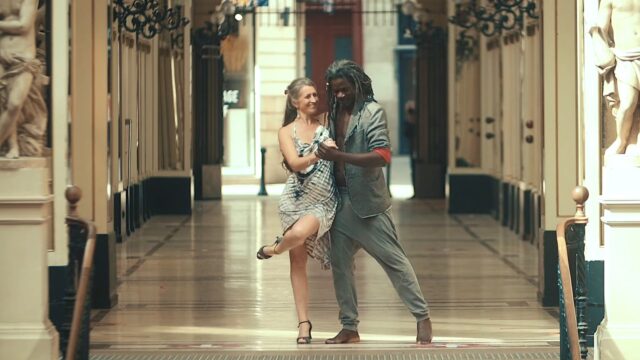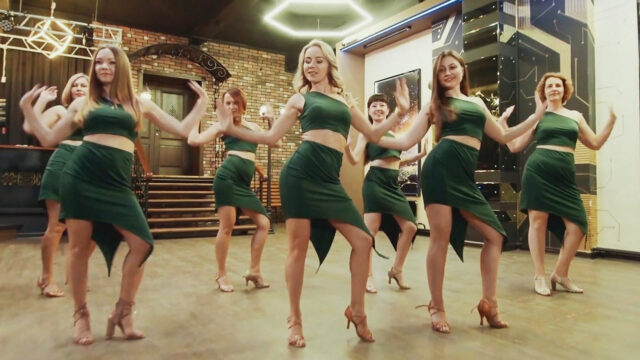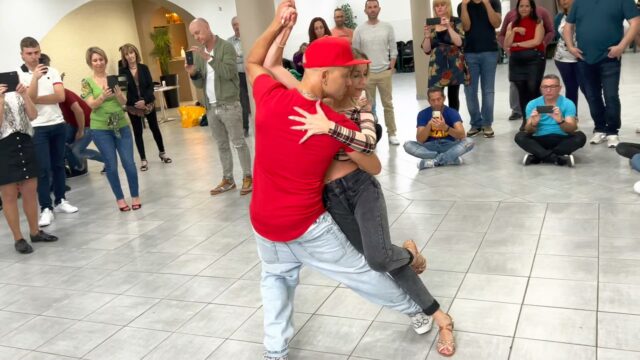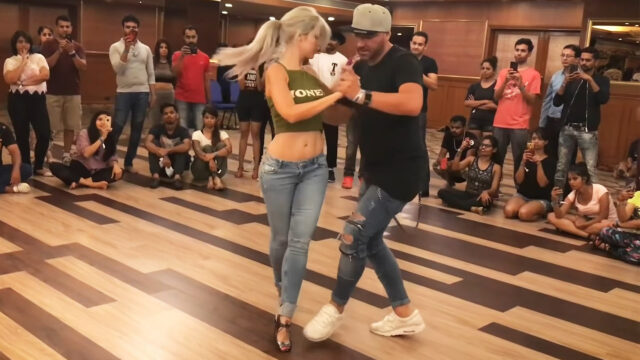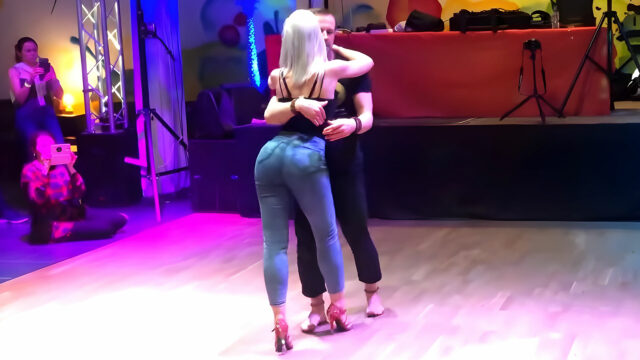All of these terms are often used interchangeably to describe a dance that could be considered a contemporary form of Argentine Tango. Today it has evolved into a separate dance style, with its own unique steps and expressions. It has a lot fewer rules to follow which makes it more inviting for those who want to be more creative and prefer more freedom to express themselves. Take a look at this video example of Pavel Sobiray and Victoria Testova improvising in the street for example.
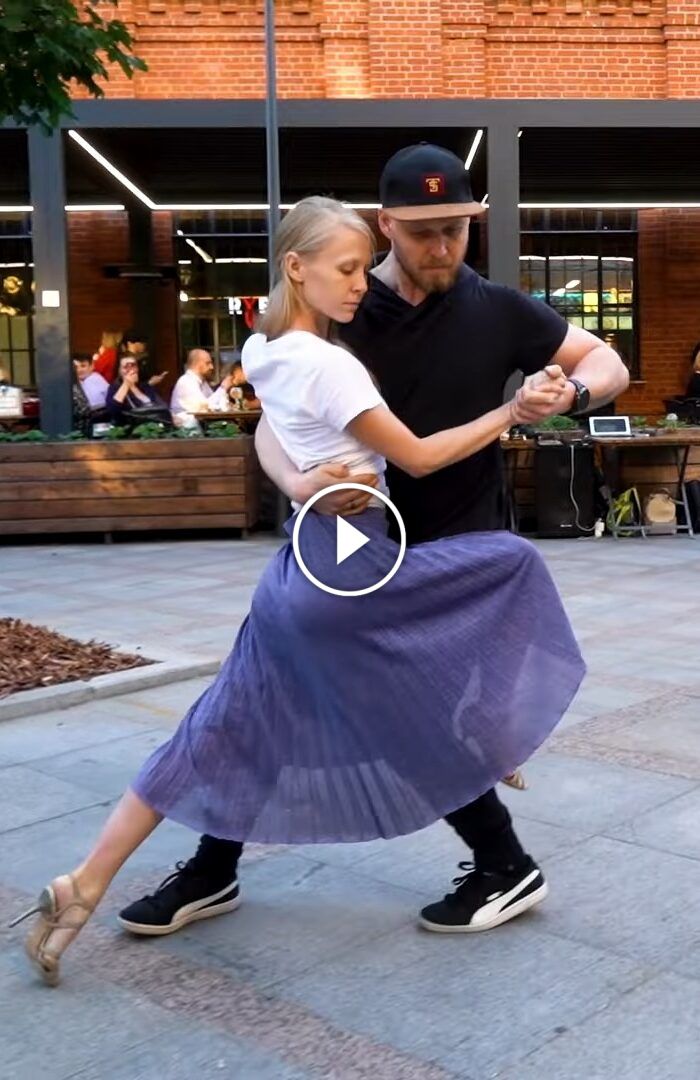
Notice that the clothes they are wearing are much more casual than traditional tango costumes. The music is also very different. It is not a tango song in the traditional sense. The modern movement of this dance has also influenced how it is danced and expressed on the dance floor. The posture, the distance between the couple and their movements are more relaxed than in the traditional tango. It is more flowing and dynamic with less rigidity and fewer set movements. It incorporates many of the traditional aspects of tango such as the embrace, but is done in a more fluid way and looks much more like contemporary dance. This modern expression of tango is very fun and exciting.
- Street Tango: When Urban Style Meets Culture and Traditions
- The Art of Blending Kizomba and Tango
- Is Kizomba similar to Tango?
When it comes to the different terms which describe this dance, such as Tango Nuevo, Neotango or Alternative Tango, all of them originally described different things. Tango Nuevo used to mean “new tango” and could be referred to as any new moves invented by new teachers of Tango. Neotango was used to describe the electronic version of tango music. Alternative tango also most likely had its own interpretation in the past, but today it is generally used to describe any dance that can be considered a contemporary form of Tango that is not done traditionally.
Someone may argue that it’s not correct to use these terms interchangeably as they are all technically different dances or styles of music. I disagree though because the way these different types of terms evolved are very similar to each other. And you can rarely find a person who knows exactly what’s the difference between any of them. So why be so precise about definitions? Can’t we just use the one that sounds best to our ears? Or all three of them if we need to give a more complete description?
Anyways if you’d like to learn Tango Nuevo, Neotango or Alternative Tango you can find many classes online these days just by searching YouTube or Google. However online classes are great for beginners but they really do not teach you everything you need to dance properly. For more in-depth lessons I would recommend going to an actual class taught by an experienced instructor.
By attending a class you will learn all the fundamentals and some important not so obvious techniques as well so you can learn how to express yourself on the dance floor and interact with your partner correctly. And since this is a partner dance, you’ll also need one to practice. That’s where your local dance studio comes in handy as most people come to such classes without partners, and are paired up with others in the class automatically.
If you enjoyed our today’s video, you are more than welcome to share it with your friends and let them know what you think about it. Also, consider checking out our most recent posts and stay in touch. Cheers!
